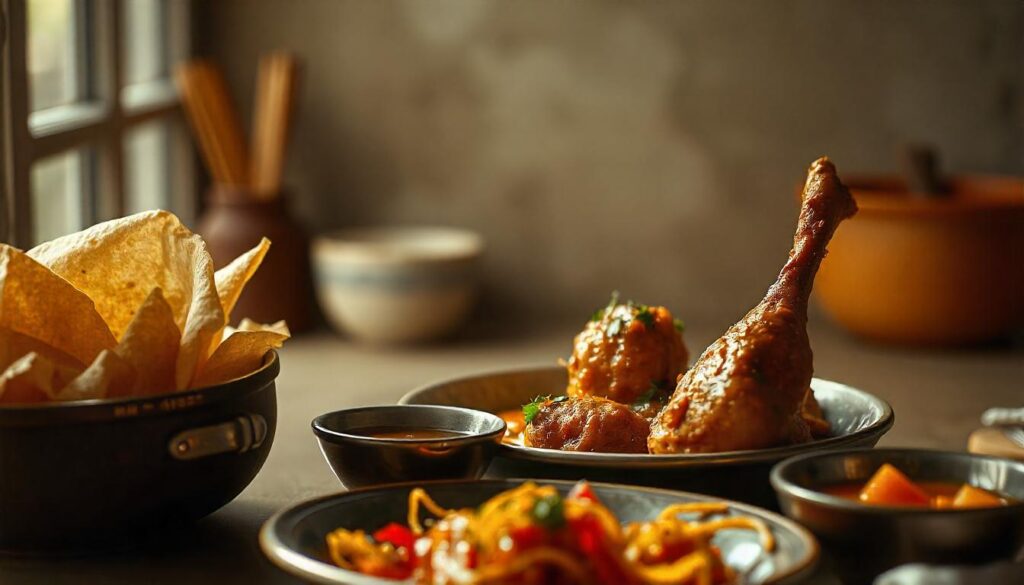
Diverse cultures have woven Malaysian cuisine into a vibrant tapestry. With a population primarily composed of Malay, Chinese, and Indian ethnicities, Malaysia’s culinary landscape is incredibly rich and varied. Sharing a cultural history with Singapore and Indonesia, many dishes across these nations exhibit striking similarities. The generous use of coconut milk and spices is a hallmark of Malaysian, Singaporean, and Indonesian cooking.
The Roots of Malaysian Cuisine
Malay culinary traditions date back to the 15th century when Malacca was a thriving spice trading center. Influenced by Arab, Persian, Chinese, and Indian traders, Malay cuisine evolved to incorporate a wide range of flavors and techniques. Chinese and European influences are also evident, as are those of the Bugis, Javanese, and Minangkabau peoples.
The Unique Flavors of Malaysia
People recognize Malaysian food for its rich, creamy coconut milk base and a complex blend of spices. Given the country’s predominantly Muslim population, Islamic dietary laws have also shaped its cuisine. Common protein sources include beef, mutton, goat, lamb, poultry, and seafood. The flavors of Malaysian cuisine are a delightful interplay of the creamy richness of coconut milk, the fiery heat of Indian spices, and the sweetness of Chinese influences. Coconut milk is a staple ingredient in Malay cooking. We can broadly categorize spices into wet and dry. Wet spices include pounded ingredients like shallots and chili. We often toast or roast dry spices like coriander and cumin before grinding them. People widely use aromatic herbs such as lemongrass, kaffir lime leaves, basil, pandan leaves, turmeric, galangal, and nutmeg.
Must-Try Malaysian Dishes
The popularity of Malaysian cuisine has soared globally, thanks in part to increased globalization and a growing appreciation for diverse flavors. Let’s explore some of the most beloved dishes:
- Nasi Lemak: Malaysia’s national dish, nasi lemak, features fragrant rice cooked in coconut milk and pandan leaf, served with a variety of accompaniments such as sambal, fried anchovies, peanuts, and cucumber.
- Ayam Masak Merah: This spicy chicken dish is a popular choice for special occasions, marinates and cooks the chicken in a rich tomato-based sauce infused with a blend of aromatic spices.
- Ayam Tandoori and Naan: Ayam tandoori is tender marinated chicken cooked in a tandoor oven, with Indian influences. It’s traditionally served with soft, leavened naan bread.
- Nasi Kandar: Nasi kandar, originating from Penang, is a fragrant rice dish served with a variety of curries, side dishes, and pickles.
- Popiah: We fill these fresh spring rolls with a mixture of shredded vegetables, bean sprouts, egg, and sometimes meat.
Inspiring Retail Flavors
We can capture and incorporate the unique flavors of Malaysian cuisine into a wide range of retail products using modern technology. Imagine the possibilities:
- Flavor powders: Perfect for seasoning instant noodles or creating flavorful sauces.
- Dipping sauces: A versatile addition to any snack or appetizer.
- Savory snacks: We can infuse authentic Malaysian flavors into anything from potato chips to crackers.
Partner with Falmont
Falmont, a leading flavor company in Asia, can help you bring the taste of Malaysia to your products. Our team of experienced flavorists can create custom flavors that are both authentic and delicious. Let us help you elevate your products and capture the hearts of consumers.
By partnering with Falmont, you can tap into the rich and diverse flavors of Malaysian cuisine and create products that stand out in the marketplace.